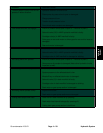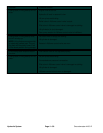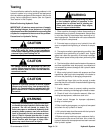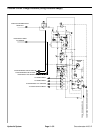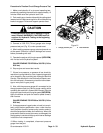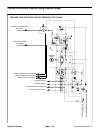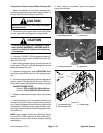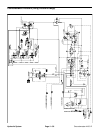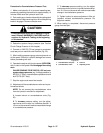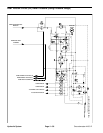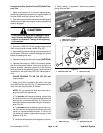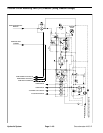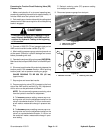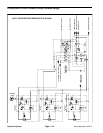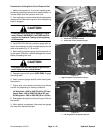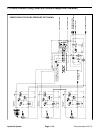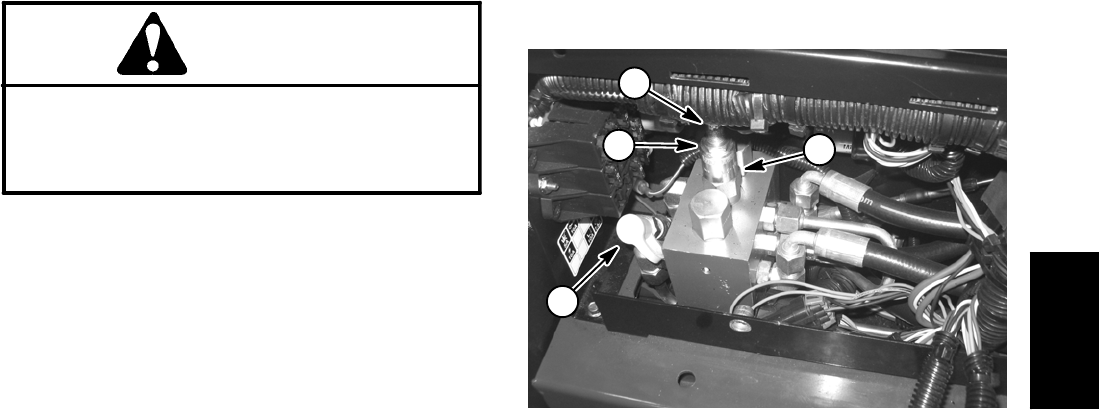
Groundsmaster 4100--D Hydraulic SystemPage 4 -- 37
Procedure for Counterbalance Pressure Test
1. Make sure hydraulic oil is at normal operating tem-
perature by operating the machine for approximately 10
minutes. Make sure the hydraulic tank is full.
2. Parkmachineon a level surface with thecuttingdeck
lowered and off. Make sure engine is off and the parking
brake is engaged. Remove console cover.
CAUTION
Prevent personal injury and/or damage to equip-
ment. Read all WARNINGS, CAUTIONS and Pre-
cautions for Hydraulic Testing at the beginning
of this section.
3. Determine system charge pressure (see Traction
Circuit Charge Pressure in this chapter).
4. Connect a 1000 PSI (70 bar) gauge to counterbal-
ance test port on manifold under console (Fig. 25).
5. After installing pressure gauge, start engine and run
at idle speed. Check for hydraulic leakage and correct
before proceeding with test.
6. Operate the engine at full engine speed (2870 RPM)
with no load on the system. Do not engage the cutting
deck.
GAUGE READING TO BE 225 PSI (15.5 bar) over
system charge pressure (e.g. if charge pressure is
250 PSI (17.2 bar), counterbalance pressure should
be 475 PSI (32.7 bar)).
7. Stop the engine and record test results.
8. Adjustment of the counterbalance valve can be per-
formed as follows:
NOTE: Do not remove the counterbalance valve
from the hydraulic manifold for adjustment.
A. Loosen locknut on counterbalance valve (Fig.
25).
B. To increase pressure setting, turn the adjust-
ment screw on the valve in a clockwise direction. A
1/8turnon thescrewwill makeameasurable change
in counterbalance pressure.
C. To decrease pressure setting, turn the adjust-
ment screw on the valve in a counterclockwisedirec-
tion. A 1/8 turn on the screw will make a measurable
change in counterbalance pressure.
D. Tighten locknut to secure adjustment. After ad-
justment, recheck counterbalance pressure. Re-
adjust as needed.
9. When testing is completed, disconnect pressure
gauge from test port.
1. Counterbalance test port
2. Counterbalance valve
3. Locknut
4. Adjusting screw
Figure 25
1
2
3
4
Hydraulic
System



